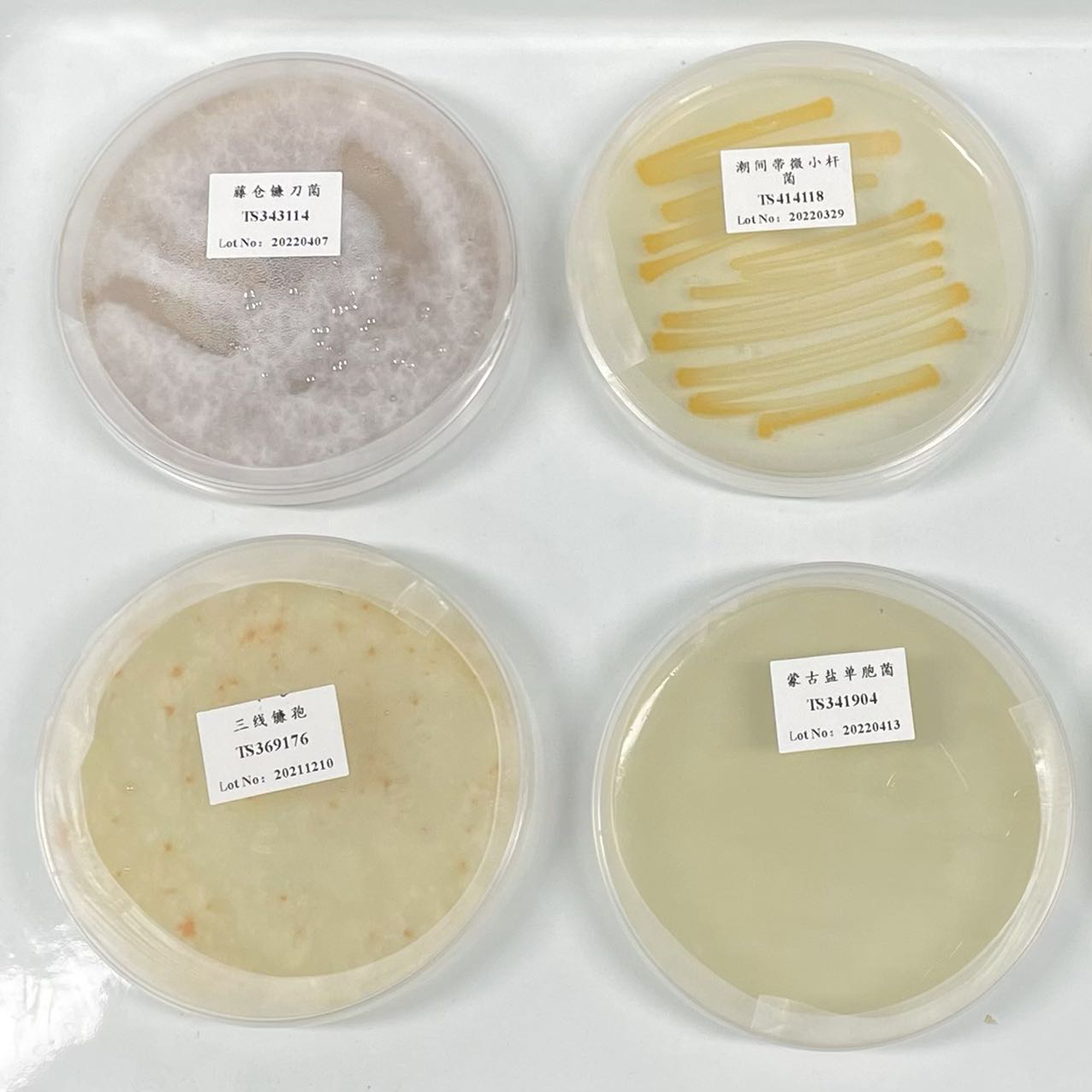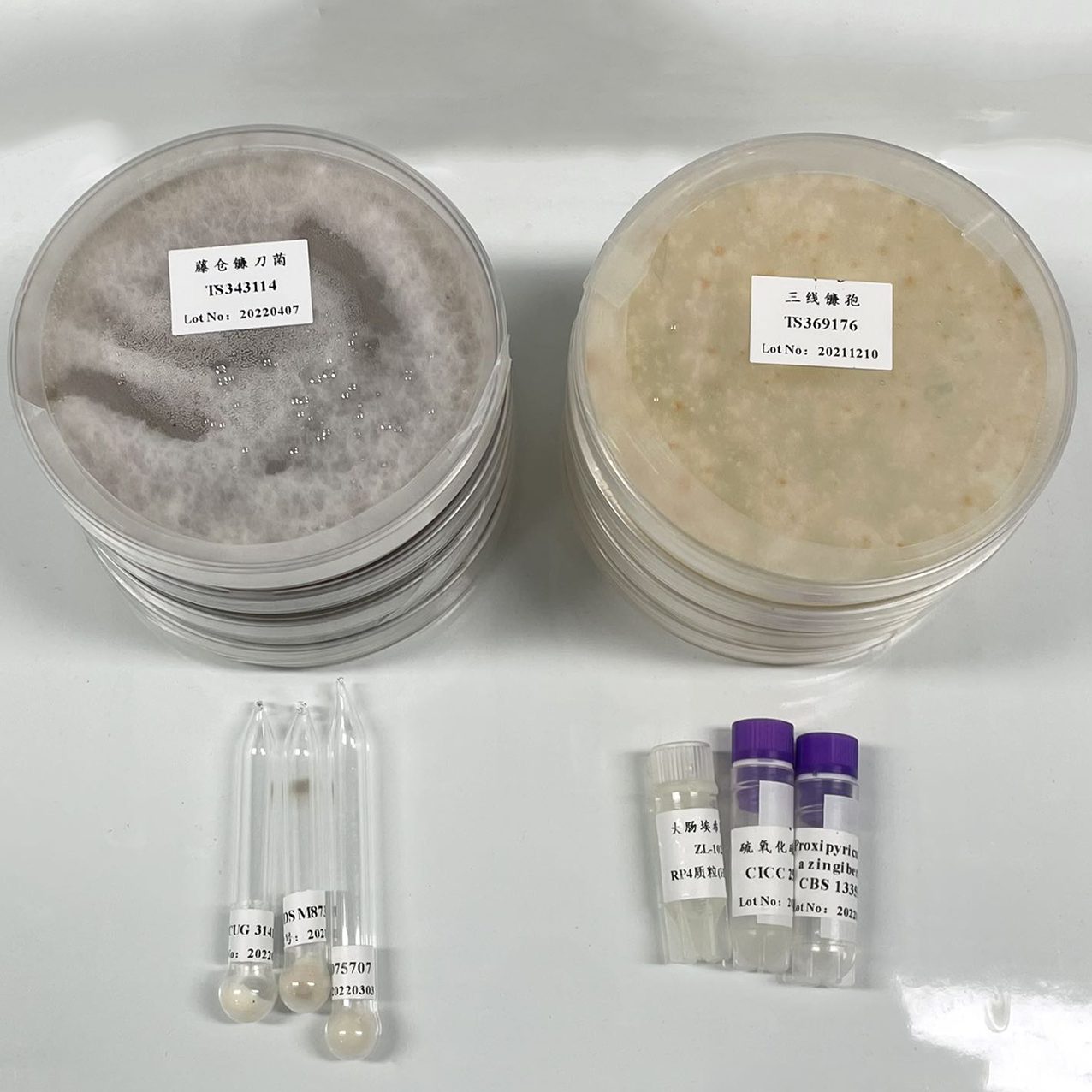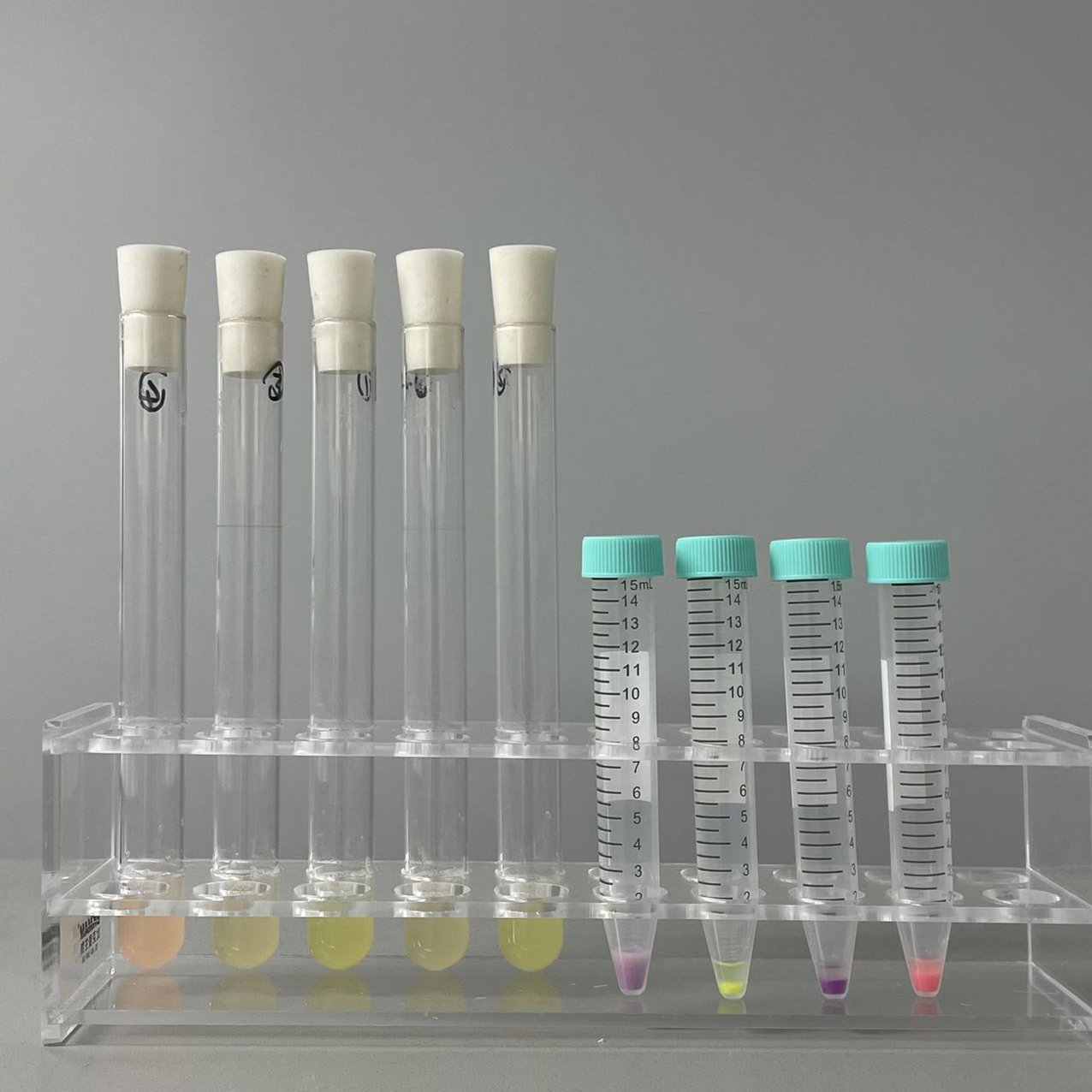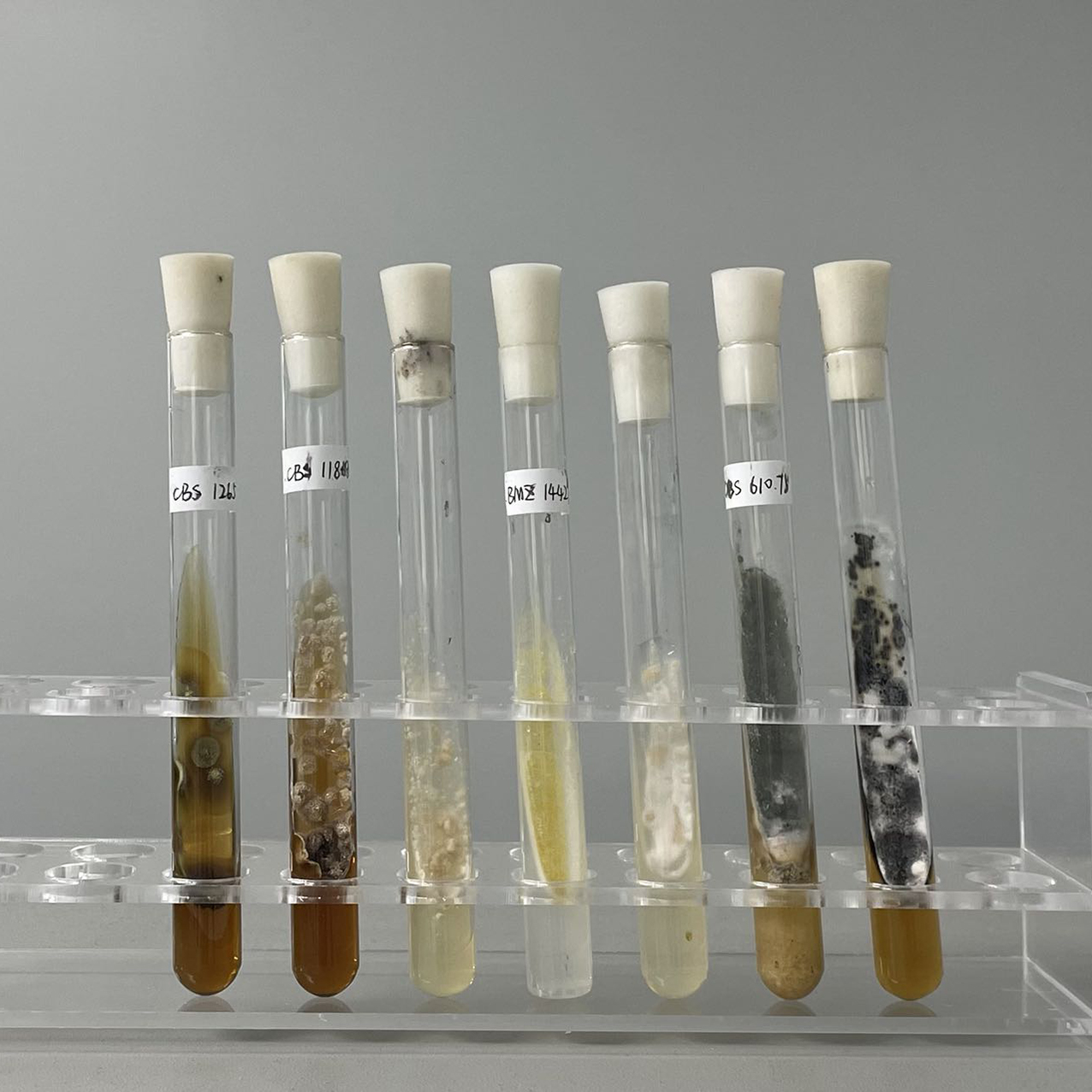Recombinant Mycobacterium tuberculosis 6 kDa early secretory antigenic target (esxA), partial
Recombinant Mycobacterium tuberculosis 6 kDa early secretory antigenic target (esxA), partial
规格:
货期:
编号:TSANTI000444
品牌:Testobio
| 产品名称: | Recombinant Mycobacterium tuberculosis 6 kDa early secretory antigenic target (esxA), partial |
| 货号: | TSANTI000444 |
| 纯度: | Greater than 90% as determined by SDS-PAGE. |
| 生物活性: | Not Test |
| 基因名: | esxA |
| Uniprot No.: | P9WNK7 |
| 别名: | (ESAT-6) |
| 种属: | Mycobacterium tuberculosis (strain ATCC 25618 / H37Rv) |
| 蛋白长度: | Partial |
| 来源: | E.coli |
| 分子量: | 16.2 kDa |
| 表达区域: | 6-95aa |
| 氨基酸序列 | WNFAGIEAAASAIQGNVTSIHSLLDEGKQSLTKLAAAWGGSGSEAYQGVQQKWDATATELNNALQNLARTISEAGQAMASTEGNVTGMFA |
| 蛋白标签: | C-terminal 6xHis-tagged |
| 产品提供形式: | Liquid or Lyophilized powder |
| 缓冲液: | If the delivery form is liquid, the default storage buffer is Tris/PBS-based buffer, 5%-50% glycerol. If the delivery form is lyophilized powder, the buffer before lyophilization is Tris/PBS-based buffer, 6% Trehalose, pH 8.0. |
| 复溶: | We recommend that this vial be briefly centrifuged prior to opening to bring the contents to the bottom. Please reconstitute protein in deionized sterile water to a concentration of 0.1-1.0 mg/mL.We recommend to add 5-50% of glycerol (final concentration) and aliquot for long-term storage at -20℃/-80℃. Our default final concentration of glycerol is 50%. Customers could use it as reference. |
| 储存条件: | Store at -20°C/-80°C upon receipt, aliquoting is necessary for mutiple use. Avoid repeated freeze-thaw cycles. |
| 保质期: | The shelf life is related to many factors, storage state, buffer ingredients, storage temperature and the stability of the protein itself. |
| 货期: | 3-7 business days |
| 注意事项: | Repeated freezing and thawing is not recommended. Store working aliquots at 4℃ for up to one week. |
| Datasheet & COA: | Please contact us to get it. |
| 功能: | A secreted protein that plays a number of roles in modulating the hosts immune response to infection as well as being responsible for bacterial escape into the host cytoplasm. Acts as a strong host (human) T-cell antigen. Inhibits IL-12 p40 (IL12B) and TNF-alpha expression by infected host (mouse) macrophages, reduces the nitric oxide response by about 75%. In mice previously exposed to the bacterium, elicits high level of IFN-gamma production by T-cells upon subsequent challenge by M.tuberculosis, in the first phase of a protective immune response. Higher levels (1.6-3.3 uM) of recombinant protein inhibit IFN-gamma production by host (human) T-cells and also IL-17 and TNF-alpha production but not IL-2; decreases expression of host ATF-2 and JUN transcription factors by affecting T-cell receptors signaling downstream of ZAP70, without cytotoxicity or apoptosis. EsxA inhibits IFN-gamma production in human T-cells by activating p38 MAPK (MAPK14), p38 MAPK is not responsible for IL-17 decrease. Binds host (mouse) Toll-like receptor 2 (TLR2) and decreases host MYD88-dependent signaling; binding to TLR2 activates host kinase AKT and subsequently inhibits downstream activation of NF-kappa-B; the C-terminal 20 residues (76-95) are necessary and sufficient for the TLR2 inhibitory effect. Required for induction of host (human) IL-1B maturation and release by activating the host NLRP3/ASC inflammasome; may also promote access of other tuberculosis proteins to the host cells cytoplasm. Induces IL-8 (CXCL8) expression in host (human) lung epithelial cells. Exogenously applied protein, or protein expressed in host (human and mouse), binds beta-2-microglobulin (B2M) and decreases its export to the cell surface, probably leading to defects in class I antigen presentation by the host cell. Responsible for mitochondrial fragmention, redistribution around the cell nucleus and decreased mitochondrial mass; this effect is not seen until 48 hours post-infection. Able to disrupt artificial planar bilayers in the absence of EsxB (CFP-10). Native protein binds artificial liposomes in the absence but not presence of EsxB and is able to rigidify and lyse them; the EsxA-EsxB complex dissociates at acidic pH, EsxB might serve as a chaperone to prevent membrane lysis. Recombinant protein induces leakage of phosphocholine liposomes at acidic pH in the absence of ExsB, undergoes conformational change, becoming more alpha-helical at acidic pH. The study using recombinant protein did not find dissociation of EsxA-EsxB complex at acidic pH. Involved in translocation of bacteria from the host (human) phagolysosome to the host cytoplasm. Translocation into host cytoplasm is visible 3 days post-infection using cultured human cells and precedes host cell death. Recombinant protein induces apoptosis in host (human) differentiated cell lines, which is cell-line dependent; bacteria missing the ESX-1 locus do not induce apoptosis. Host (human) cells treated with EsxA become permeable to extracellular dye. EsxA and EsxA-EsxB are cytotoxic to pneumocytes. ESX-1 secretion system-induced host (mouse) cell apoptosis, which is probably responsible for infection of new host cells, might be due to EsxA. EsxA induces necrosis in aged neutrophils. May help regulate assembly and function of the type VII secretion system (T7SS). EsxA disassembles pre-formed EccC-EsxB multimers, possibly by making EccC-EsxA-EsxB trimers instead of EccC-EsxB-EsxB-EccC tetramers.; May be critical in pro-bacteria versus pro-host interactions; ESX-1 mediates DNA mediated export (maybe via EsxA). The DNA interacts with host (human) cGAS, leading to cGAMP production and activation of the host STING-TBK-1-IRF-3 signaling pathway that leads to IFN-beta which is thought to be pro-bacteria. Mycobacterial dsDNA also interacts with AIM2-NLRP3-ASC to activate an inflammasome, leading to the pro-host IL-1-beta. |
| 基因功能参考文献: | The authors conclude that Mycobacterium tuberculosis ESAT-6 stimulates macrophage IL-6 production through STAT3 activation. PMID: 28106119 |
| 亚细胞定位: | Secreted. Secreted, cell wall. Host cell surface. Host cytoplasm. Host endoplasmic reticulum. Host cell membrane. |
| 蛋白家族: | WXG100 family, ESAT-6 subfamily |
| 数据库链接: | KEGG: mtu:Rv3875 |
首页/产品中心/蛋白
产品中心
联系我们 CONTACT US
0574-87917803
testobio@163.com
浙江省宁波市镇海区庄市街道兴庄路9号
创e慧谷42号楼B幢401室
最新促销

Recombinant Mycobacterium tuberculosis 6 kDa early secretory antigenic target (esxA), partial
Recombinant Mycobacterium tuberculosis 6 kDa early secretory antigenic target (esxA), partial
规格:
货期:
编号:TSANTI000444
品牌:Testobio
| 产品名称: | Recombinant Mycobacterium tuberculosis 6 kDa early secretory antigenic target (esxA), partial |
| 货号: | TSANTI000444 |
| 纯度: | Greater than 90% as determined by SDS-PAGE. |
| 生物活性: | Not Test |
| 基因名: | esxA |
| Uniprot No.: | P9WNK7 |
| 别名: | (ESAT-6) |
| 种属: | Mycobacterium tuberculosis (strain ATCC 25618 / H37Rv) |
| 蛋白长度: | Partial |
| 来源: | E.coli |
| 分子量: | 16.2 kDa |
| 表达区域: | 6-95aa |
| 氨基酸序列 | WNFAGIEAAASAIQGNVTSIHSLLDEGKQSLTKLAAAWGGSGSEAYQGVQQKWDATATELNNALQNLARTISEAGQAMASTEGNVTGMFA |
| 蛋白标签: | C-terminal 6xHis-tagged |
| 产品提供形式: | Liquid or Lyophilized powder |
| 缓冲液: | If the delivery form is liquid, the default storage buffer is Tris/PBS-based buffer, 5%-50% glycerol. If the delivery form is lyophilized powder, the buffer before lyophilization is Tris/PBS-based buffer, 6% Trehalose, pH 8.0. |
| 复溶: | We recommend that this vial be briefly centrifuged prior to opening to bring the contents to the bottom. Please reconstitute protein in deionized sterile water to a concentration of 0.1-1.0 mg/mL.We recommend to add 5-50% of glycerol (final concentration) and aliquot for long-term storage at -20℃/-80℃. Our default final concentration of glycerol is 50%. Customers could use it as reference. |
| 储存条件: | Store at -20°C/-80°C upon receipt, aliquoting is necessary for mutiple use. Avoid repeated freeze-thaw cycles. |
| 保质期: | The shelf life is related to many factors, storage state, buffer ingredients, storage temperature and the stability of the protein itself. |
| 货期: | 3-7 business days |
| 注意事项: | Repeated freezing and thawing is not recommended. Store working aliquots at 4℃ for up to one week. |
| Datasheet & COA: | Please contact us to get it. |
| 功能: | A secreted protein that plays a number of roles in modulating the hosts immune response to infection as well as being responsible for bacterial escape into the host cytoplasm. Acts as a strong host (human) T-cell antigen. Inhibits IL-12 p40 (IL12B) and TNF-alpha expression by infected host (mouse) macrophages, reduces the nitric oxide response by about 75%. In mice previously exposed to the bacterium, elicits high level of IFN-gamma production by T-cells upon subsequent challenge by M.tuberculosis, in the first phase of a protective immune response. Higher levels (1.6-3.3 uM) of recombinant protein inhibit IFN-gamma production by host (human) T-cells and also IL-17 and TNF-alpha production but not IL-2; decreases expression of host ATF-2 and JUN transcription factors by affecting T-cell receptors signaling downstream of ZAP70, without cytotoxicity or apoptosis. EsxA inhibits IFN-gamma production in human T-cells by activating p38 MAPK (MAPK14), p38 MAPK is not responsible for IL-17 decrease. Binds host (mouse) Toll-like receptor 2 (TLR2) and decreases host MYD88-dependent signaling; binding to TLR2 activates host kinase AKT and subsequently inhibits downstream activation of NF-kappa-B; the C-terminal 20 residues (76-95) are necessary and sufficient for the TLR2 inhibitory effect. Required for induction of host (human) IL-1B maturation and release by activating the host NLRP3/ASC inflammasome; may also promote access of other tuberculosis proteins to the host cells cytoplasm. Induces IL-8 (CXCL8) expression in host (human) lung epithelial cells. Exogenously applied protein, or protein expressed in host (human and mouse), binds beta-2-microglobulin (B2M) and decreases its export to the cell surface, probably leading to defects in class I antigen presentation by the host cell. Responsible for mitochondrial fragmention, redistribution around the cell nucleus and decreased mitochondrial mass; this effect is not seen until 48 hours post-infection. Able to disrupt artificial planar bilayers in the absence of EsxB (CFP-10). Native protein binds artificial liposomes in the absence but not presence of EsxB and is able to rigidify and lyse them; the EsxA-EsxB complex dissociates at acidic pH, EsxB might serve as a chaperone to prevent membrane lysis. Recombinant protein induces leakage of phosphocholine liposomes at acidic pH in the absence of ExsB, undergoes conformational change, becoming more alpha-helical at acidic pH. The study using recombinant protein did not find dissociation of EsxA-EsxB complex at acidic pH. Involved in translocation of bacteria from the host (human) phagolysosome to the host cytoplasm. Translocation into host cytoplasm is visible 3 days post-infection using cultured human cells and precedes host cell death. Recombinant protein induces apoptosis in host (human) differentiated cell lines, which is cell-line dependent; bacteria missing the ESX-1 locus do not induce apoptosis. Host (human) cells treated with EsxA become permeable to extracellular dye. EsxA and EsxA-EsxB are cytotoxic to pneumocytes. ESX-1 secretion system-induced host (mouse) cell apoptosis, which is probably responsible for infection of new host cells, might be due to EsxA. EsxA induces necrosis in aged neutrophils. May help regulate assembly and function of the type VII secretion system (T7SS). EsxA disassembles pre-formed EccC-EsxB multimers, possibly by making EccC-EsxA-EsxB trimers instead of EccC-EsxB-EsxB-EccC tetramers.; May be critical in pro-bacteria versus pro-host interactions; ESX-1 mediates DNA mediated export (maybe via EsxA). The DNA interacts with host (human) cGAS, leading to cGAMP production and activation of the host STING-TBK-1-IRF-3 signaling pathway that leads to IFN-beta which is thought to be pro-bacteria. Mycobacterial dsDNA also interacts with AIM2-NLRP3-ASC to activate an inflammasome, leading to the pro-host IL-1-beta. |
| 基因功能参考文献: | The authors conclude that Mycobacterium tuberculosis ESAT-6 stimulates macrophage IL-6 production through STAT3 activation. PMID: 28106119 |
| 亚细胞定位: | Secreted. Secreted, cell wall. Host cell surface. Host cytoplasm. Host endoplasmic reticulum. Host cell membrane. |
| 蛋白家族: | WXG100 family, ESAT-6 subfamily |
| 数据库链接: | KEGG: mtu:Rv3875 |






